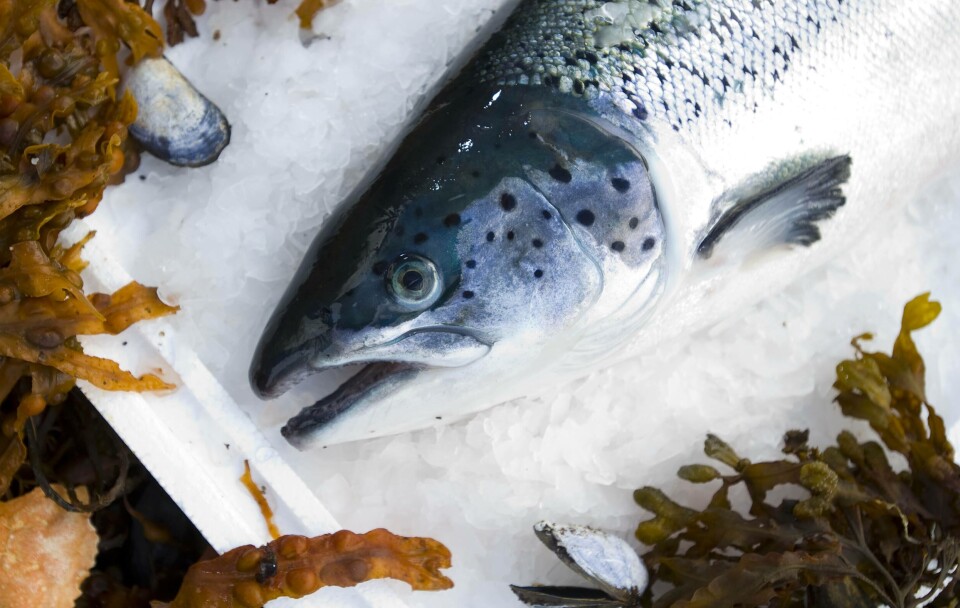
Putin and lice cause problems for Lerøy
Lerøy Seafood Group (LSG), part owner of Scottish Sea Farms, has reported a tough Q3, with lice (which caused many fish to be harvested earlier than planned) and the Russian trade embargo (which has undermined the trout market) shouldering most of the blame.
Despite this the farms run by Leroy Aurora have performed well and the group adds that those sites where cleaner fish have been deployed have also been amongst the best performers, suggesting that novel lice mitigation measures are paying off.
The group posted an operating profit before fair value adjustment of NOK 253 million in Q3 2015, compared with NOK 303 million in Q3 2014. This is equivalent to operating profit before biomass adjustment of NOK 6.2 per kg compared with NOK 7.3 in the same period last year.
"The operating profit for Q3 2015 bears witness to the difficulties faced on the trout market caused by the sustained political trade barriers and the early harvest of salmon, with lower prices realised and higher release from stock costs," explains CEO Henning Beltestad. "However, we are experiencing a strong growth in demand for Norwegian seafood, and the weaker Norwegian krone has boosted our competitiveness. We expect in the future to witness the results of the measures and investments made by the Group to reduce production costs for salmon and trout."
"The difficulties represented by Russia's ban on imports of Norwegian salmon and trout from 7 August 2014 were exacerbated at the end of August 2015 when restrictions were introduced on the import of salmon and trout to the EAEU customs union (Eurasian Economic Union), an area covering several of Russia's neighbouring countries. These trade barriers have unfortunately had a substantially negative impact on the trout market in particular," he adds.
Outlook
The Group has made substantial investments in the use of cleaner fish. In locations where cleaner fish have been in use, the Group has achieved positive results. However, as previously reported, the Group will not reach full-scale utilisation of cleaner fish in all locations until 2016. Cleaner fish represent an important tool, but other measures are also required to achieve optimal production including mechanical cleaning and fresh water treatment. In 2015, the Group is in a transitional phase, requiring extraordinarily high direct and indirect treatment costs in addition to major costs for prevention.
The Norwegian krone has weakened against key currencies. This dynamic is positive for prices realised for salmon but also means - all other factors being equal - higher feed prices. As a result of our description of a challenging situation for Lerøy Midt, the Board of Directors expects release from stock costs to be higher than those deemed normal by the Board and management in the fourth quarter, but with the potential for reductions in 2016.
One very positive factor was the re-establishment of imports to parts of the EAEU customs union towards the end of October 2015. At the time of writing, it appears that there are very limited opportunities for growth in the global supply of salmon and trout for the next few years. This gives rise to expectations for a tight market in 2016. The Board of Directors has a positive outlook due to their confidence in the potential for substantial improvements to own production.
Kontali currently estimates a decline in the supply of Norwegian salmon in 2016. This implies in principle that there has not been any growth in Norwegian production since 2012. Given the prevailing political framework, neither are there any prospects for growth in the medium term. It is important that the industry and political premise setters do their utmost to ensure that the industry can exploit its potential for a lasting increase in value generation and increased employment. It is crucial that Lerøy and the industry are able to solve current challenges, but of equal importance is the willingness among both local and national politicians to take a long-term perspective towards decision-making and framework development in order to allow the industry to fully exploit its major potential. The rapid response from the Norwegian authorities to the industry's need to implement provisional growth in maximum allowable biomass (MAB), as a result of the above-mentioned trade barriers, is extremely positive for value generation and facilitates continuity in employment.
The Group predicts a total harvest volume of 173,000 GWT for 2015, including the share of LSG's volume from associates. The Board of Directors also currently estimates a corresponding total harvest volume for 2016 of 185,000 GWT.























































